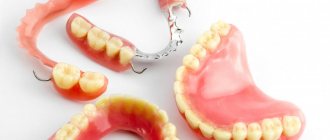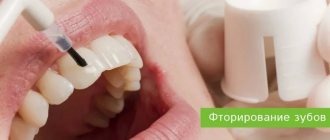Expecting a baby is one of the most wonderful periods in a woman’s life. Her thoughts are focused on dreams of the future baby and joyful worries about children's things, a stroller, and toys. But changes in the body sometimes prepare unpleasant surprises for the expectant mother. Thus, many women feel dryness, itching and burning in the intimate area during pregnancy. What caused them?
Why does itching and burning occur in the intimate area during pregnancy?
While expecting a baby, a woman’s hormonal background is completely restructured, as a result the vaginal microflora changes, which leads to the appearance of pathogenic bacteria and fungi that cause discomfort. If you add to this the wearing of synthetic underwear, the use of sanitary pads with fragrances, and too hot weather, then unpleasant symptoms such as dryness, burning and itching in the intimate area may appear during pregnancy. Many women are ready to sacrifice good health for the health of their baby. Fearing taking medications, they endure discomfort until the birth. However, itching, pain and burning during pregnancy force the expectant mother to be in a state of constant stress, which only increases the discomfort. If you feel discomfort in the intimate area, consult a doctor who will tell you what is causing it and help you choose the right treatment.
Infections of the lower genital tract make up 57.6% of all infectious and inflammatory diseases of the female genital organs, and during pregnancy, vulvovaginitis develops 2-4 times more often than in non-pregnant women [1, 7]. Urogenital infections are a risk factor, and sometimes one of the causes of complications of pregnancy and childbirth: miscarriage, premature rupture of membranes, placental insufficiency, intrauterine infection, premature birth, postpartum purulent-septic diseases in the mother and newborn [2, 5].
The need for therapeutic measures for urogenital infections in pregnant women is obvious. At the same time, changes in hormonal levels caused by pregnancy initiate imbalances between representatives of the vaginal microbiocenosis, which leads to the emergence of a source of infection in the body itself and predetermines the features of the clinical course of infections during pregnancy - these are blurred clinical symptoms, a variety of clinical forms and a high risk of complications. against the background of an asymptomatic course. In this context, the use of undifferentiated therapy in pregnant women has broad clinical indications: incomplete examination, III-IV degree of vaginal cleanliness, history of recurrent bacterial vaginosis, mixed infections. At the same time, choosing an “ambulance” drug during pregnancy is an extremely difficult task, since it requires compliance with certain conditions. First of all, the drug must have a wide spectrum of action that does not interfere with the functional activity of lactobacilli and their biological cycle; further, the drug must not contain antibiotics that have a systemic effect. It is necessary to take into account the safety of its use for the mother and fetus at different stages of pregnancy, the possibility of starting therapy before receiving tests, and the tolerability of the drug. At the same time, the arsenal of available drugs that meet all these requirements for use in early pregnancy is currently extremely limited.
The purpose of the study was to study the effectiveness of fluomizin in the treatment of bacterial vulvovaginitis during early pregnancy (I-II trimester).
Material and methods
The study was conducted in 2011 on the basis of the gynecological department No. 2 of the City Clinical Hospital No. 36 of Moscow.
We examined 60 pregnant women aged from 18 to 40 years, average age 26.4 years, with a verified diagnosis of bacterial vulvovaginitis, who took fluomizin vaginal tablets at night for 6 days.
Fluomizin is a topical antiseptic drug with a universal mechanism of action - damage to the cell membrane. Under the influence of the active substance, the permeability of the cell membrane increases, which leads to the death of pathogenic agents. After exposure to the cell surface, protein denaturation occurs and a blocking effect on metabolic reactions occurs. The antimicrobial effect is due to the presence of quaternary ammonium salts and dequalinium chloride in the composition of the drug. Registration number of the drug Fluomizin 008618/09, international nonproprietary name - dequalinium chloride. Dosage form: vaginal tablets No. 6. One tablet contains dequalinium chloride 10 mg (active substance), lactose monohydrate, microcrystalline cellulose, magnesium stearate (excipients) [3].
It should be emphasized that fluomizin is a broad-spectrum drug, and after dissolving 1 vaginal tablet in the vagina, the concentration of dequalinium chloride is about 4000 mg/l, which is many times higher than the minimum inhibitory concentration for most aerobic bacteria ( Staphylococcus aureus, Streptococcaceae
groups A, B, C,
Listeria
spp.,
Escherichia coli, Klebsiella
spp.,
Pseudomonas
spp.,
Serratia
spp.,
Proteus
spp.,
Gardnerella vaginalis),
anaerobic microorganisms
(Bacteroides
spp.,
Atopobium vaginae, Prevotella
spp.,
Porphyromonas
spp .,
Peptostreptococci
spp.), fungi
(Candida albicans, glabrata, krusei, tropicalis)
and protozoa
(Trichomonas vaginalis)
[4, 6, 7].
Fluomizin is approved for use during the entire period of pregnancy and lactation [3].
The inclusion of patients in the study was based on the following criteria: pregnancy from 4 to 22 weeks, age 18-40 years, confirmed diagnosis of bacterial vulvovaginitis, strict adherence to the doctor’s instructions, ability to adequately cooperate.
Exclusion criteria were any of the signs that were identified during screening and examination of patients - intolerance to the components of the drug, ulcerative lesions of the epithelium of the vagina and cervix, specific infections (viruses, STIs, candidiasis), the use of antibacterial drugs, both local and systemic.
The observation was carried out in three successive stages. A screening examination, not exceeding three days, during which anamnestic data were clarified, a physical examination was carried out, material was collected for laboratory tests: a smear of the vaginal contents for microscopy (the number of leukocytes, the presence/absence of pathogenic or normal microflora), a serological blood test for RW, HIV, STI testing, bacteriological examination of vaginal contents, preliminary diagnosis.
Upon completion of screening procedures, which did not exceed three days, laboratory data were assessed, a final diagnosis was made, inclusion/exclusion criteria were used, and fluomizin was prescribed 1 vaginal tablet at night for 6 days.
After completion of fluomizin therapy, a physical examination was performed again, material was collected for laboratory tests (smear of vaginal contents for microscopy, bacteriological examination of vaginal contents), assessment of the effectiveness of therapy according to clinical and laboratory criteria (vaginal smear and physical examination) and registration of adverse events.
To assess the effect of the drug, treatment effectiveness indicators were used, which comprised three main clusters: primary parameters, secondary parameters and tolerability assessment.
Primary parameters included clinical indicators of recovery (absence of pathological discharge, pH of the vaginal contents less than 4.5, negative amino test, leukocyte count less than 10 in the field of view, absence of “key cells”) and microbiological assessment of the vaginal microflora (quantitative composition).
Secondary parameters were based on the calculation of the “total symptom score” (a rating of the four main symptoms of vaginal infection - discharge, burning, itching, redness) using a four-level rating scale: 0 - none, 1 - mild, 2 - moderate, 3 - severe), general assessment of the patient and safety of use.
To monitor drug tolerability, registration of adverse events, the course of concomitant diseases and laboratory parameters was used.
Data are presented in the form M±m, where M is the arithmetic mean, m is the error of the mean. To assess statistically significant differences in the obtained data, the Student's test was used; the critical significance level was taken to be less than or equal to 0.05. Results for the “total symptom score” were calculated using the nonparametric Wilcoxon-Mann-Whitney test. Clinical and microbiological parameters were assessed using descriptive statistics techniques.
Results and discussion
The study showed that 56 (93.3%) pregnant women at visit 0 (screening) complained of discharge from the genital tract, 30 (50.0%) patients noted a burning sensation in the external genital area and 28 (46.7%) - itching of the perineum and vagina. At the same time, the score of the “total symptomatic score” averaged 5.13±1.31.
Physical examination revealed that all 60 patients had pathological discharge from the genital tract, hyperemia of the vaginal mucosa, a positive amino test, the pH of vaginal discharge ranged from 4.6-4.9 and averaged 4.71±0.12, microscopy of vaginal smears corresponded to III-IV degree of purity.
Microbiological examination of the vaginal contents of the patients revealed representatives of the coccal and intestinal groups of microorganisms in quantities of more than 106 CFU/ml, which was accompanied by inhibition of the growth of lactic acid bacteria: Staphylococcus aureus was isolated in 61.7% of patients,
in 36.7% -
Enterococcus faecium,
in 15.0% -
Haemophilus influenzae,
in 55.0% -
Enterobacter aerogenes,
in 20.0% -
Escherichia coli,
in 16.7% -
Klebsiella
spp., in 21.6 % -
Proteus vulgaris.
In turn,
Lactobacilli
spp. in quantities exceeding 106 CFU/ml were detected in less than a quarter of those examined (23.3%).
After treatment, all women noted a significant improvement in their well-being, expressed in the leveling of clinical symptoms: only 4 patients (6.7%; p<0.001) continued to be bothered by vaginal discharge, 2 (3.3%; p<0.001) - itching and 2 (3.3%; p<0.001) - burning (Fig. 1).
Figure 1. Dynamics of symptoms of vaginal infection during treatment with fluomizin. The mean “total symptom score” score was 1.33±1.36 (p=0.046).
During physical examination, pathological vaginal discharge was noted in 2 patients (3.3%; p <0.001), the amine test in all patients was negative, the pH of vaginal discharge was on average 4.44 ± 0.16 (p = 0.046). Microscopically, in none of the patients the number of leukocytes exceeded 10 in the field of view; “key” cells were absent.
The use of the drug led to the normalization of the vaginal microflora - the number of opportunistic bacteria, which were detected before treatment in an amount of more than 106 CFU/ml, decreased: in 6.7% of patients, the growth of Staphylococcus aureus
(p<0.001);
in 5.0% - Enterococcus faecium
(p <0.001);
in 3.3% - Haemophilus influenzae
(p=0.025);
in 5.0% - Enterobacter aerogenes
(p <0.001);
3.3% had Escherichia coli
(p=0.004);
3.3% have Klebsiella
spp.
(p=0.013); 5.0% had Proteus vulgaris
(p=0.007).
The number of patients in whom Lactobacilli
spp. in a titer of more than 106 CFU/ml, did not change at the end of therapy - 26.7% versus 23.3% during screening (p = 0.669), which is due to the absence of a negative effect of the drug on the functional activity of lactobacilli (Fig. 2).
Figure 2. Quantitative composition of the vaginal flora during treatment with fluomizin.
The effectiveness of taking fluomizin for the treatment of bacterial vulvovaginitis during pregnancy in the first and second trimester was 91.7 ± 3.6. All patients completed the full six-day course of therapy with fluomizin, in the form of vaginal tablets. No adverse events or adverse reactions to the drug were identified. In addition, the patients noted that fluomizin dissolves perfectly in the vagina and does not leak, application once a day at night is comfortable, one package is enough for the entire period of treatment.
conclusions
1. The study found that fluomizin vaginal tablets, taken one at night for 6 days, are a highly effective drug for the treatment of bacterial vulvovaginitis during early pregnancy.
2. The drug Fluomizin is safe, easy to use, well tolerated by patients and can be recommended for widespread practical use.
What diseases of the intimate area can occur during pregnancy?
Often, during pregnancy, the expectant mother is bothered by irritating discharge with an unpleasant odor, itching, and dryness. The cause may be one of the following infections:
- thrush.
Its appearance is caused by the proliferation of yeast fungi on the mucous membrane of the intimate area. The infection can be transmitted to the child during childbirth, affecting the mucous membranes of the mouth and genitals; - bacterial vaginosis.
Caused by pathogenic bacteria and manifests itself in the form of gray discharge with an unpleasant odor; - urinary tract infections
. Hostile microorganisms penetrate the urinary organs when urinating from the intimate area. Cutting and burning are the first signs of this condition. This does not harm the baby, but can lead to kidney inflammation, which is dangerous for the expectant mother.
If you see a doctor in time and undergo the necessary treatment, you can avoid dangerous complications.
Diagnosis and treatment of thrush at the Yauza Clinical Hospital
Diagnostics
Diagnosis of vaginal candidiasis begins with interviewing the patient.
Some gynecological (bacterial vaginosis, inflammatory processes in the female reproductive system) and concomitant diseases (diabetes mellitus, candidiasis and intestinal dysbiosis, etc.) are important. It is not uncommon for thrush to develop after long-term use of antibiotics, hormones, or immunosuppressants. Upon examination, a characteristic clinical picture is revealed - a white coating on the inflamed mucous membrane of the genital organs, copious, curdled discharge. Examination of a vaginal smear reveals fungal flora. If necessary, a culture is carried out to determine the type of fungus and its sensitivity to antifungal drugs (cultural analysis). Among additional studies, examination for sexually transmitted infections, diabetes mellitus and diagnosis of intestinal microflora may be recommended. Make an appointment with a gynecologist
Treatment
How to cure thrush?
General and local antimycotic therapy Gynecologists at the Yauza Clinical Hospital provide effective treatment for thrush in women. Today there are many medications to combat candidiasis: oral medications, creams, vaginal tablets, suppositories for thrush. Among the most popular drugs for vaginal candidiasis are flucostat, fluconazole (oral tablets), clotrimazole (vaginal tablets or cream), pimafucin (suppositories) and many other drugs. Your doctor should choose the optimal treatment regimen for you.
Reducing the role of predisposing factors To avoid relapses, it is necessary to identify and eliminate factors contributing to the disease. If possible, stop taking glucocorticosteroids and cytostatics. For diabetes mellitus, adjust blood glucose levels with medication. Restore normal microflora in the intestines. In addition, you need to take antibiotics with caution. Exacerbation/recurrence of thrush after or during a course of antibiotic therapy is common. Therefore, taking antibiotics must be combined with taking antifungals and probiotics. It is necessary to maintain personal hygiene, maintain immunity, and avoid stressful situations.
Sexual life with thrush Many people are interested in whether it is possible to be sexually active with thrush and its treatment? You can protect yourself with a condom. To achieve good results, it is often recommended to undergo treatment of vaginal candidiasis together with your sexual partner.
Tips for intimate hygiene for an expectant mother
Burning and itching in the intimate area during pregnancy can be prevented. Here are 6 simple tips to help reduce your risk of developing infections:
- Take a shower no more than 2 times a day. Water and soap remove natural protection - beneficial microbes.
- Choose intimate hygiene gels containing lactic acid or plant extracts: linden, chamomile, blue lotus, white tea. These natural components have a positive effect on the condition of the most delicate area of our body.
- Dry your body thoroughly after intimate toilet with a cotton towel. Do not share a towel with other family members.
- Wear panties made of 100% cotton, which help your skin breathe and do not create a greenhouse effect, especially in hot weather.
- Use pads filled with cotton extract. They allow oxygen to pass through well, which destroys yeast.
- Replace the bath with a shower. Hot, soapy water can bring dirt into the body and wash away beneficial bacteria. If you really want to soak in the bath, wash yourself in the shower first. Use sea salt instead of foam.
The main effect of borax in glycerin
Sodium tetraborate is a substance based on a boron compound. It is used for industrial purposes, veterinary medicine, and has also found its application in medicine.
Sodium tetraborate is an antiseptic. This means that its main effect is associated with the inhibition of the vital processes of microbes.
That is why sodium tetraborate is widely used to treat chronic tonsillitis, diaper rash and other similar diseases.
It does not have a direct fungicidal effect on fungi, but affects other processes, thereby creating unbearable conditions for the further development of thrush.
Thanks to the following effects of the drug, you can get rid of candidal colpitis:
- During the treatment, fungi are mechanically removed from the vaginal mucosa.
- It affects candida, disrupting their ability to attach to epithelial cells. This prevents the proliferation of the fungus, which ultimately leads to the complete disappearance of the pathogen.
- Often thrush is a “companion” of other sexually transmitted infections. Sodium tetraborate has a detrimental effect on many pathogenic microorganisms, thereby helping to restore the balance of flora in the vagina. This leads to the disappearance of symptoms of thrush, including.
We recommend reading the article about colpitis in early pregnancy. From it you will learn about infectious and non-infectious causes of colpitis in a pregnant woman, and treatment methods.
And here is more information about thrush as a sign of pregnancy.
Is it possible to sodium tetraborate in glycerin during pregnancy?
In the instructions for the drug, pregnancy is a relative contraindication for treatment with sodium tetraborate. This can be explained by the following facts:
- The safety of the drug on the developing fetus has not been established, since tests on pregnant women and children are prohibited.
- To treat thrush, you should douche or put tampons. How safe it is for a particular pregnant woman can only be decided by a doctor. For example, in case of a threat, ICN and many other cases, this should not be done.
- Sodium tetraborate does not have a direct fungicidal effect, so it is inferior to many antifungal drugs.
The range of drugs with proven safety for the treatment of thrush during pregnancy is quite large, so it is easier and more reliable to choose one with proven effectiveness and targeted action.
Inconveniences you may encounter
Sodium tetraborate is presented in the form of a solution. And it is an antiseptic, not an anticandidiasis drug. Therefore, there are some difficulties in treating with this drug. Namely:
- It is advisable that the vaginal rinsing with the solution be carried out by medical personnel. Firstly, they will carry out the procedure safely, without injuring the mucous membrane. Secondly, with strict adherence to the dose.
- Treatment with sodium tetraborate lasts for weeks. To get rid of thrush you will need at least 7 to 10 days of douching or tampons.
- There is a high risk of relapse of candidal colpitis.
Contraindications for use
Sodium tetraborate is a toxic substance in certain doses, so its use should be approached with special vigilance, following all doctor’s prescriptions. It is safer to use a 5% solution strictly according to the instructions.
The restrictions on its use are as follows:
- You should not use the drug if hypersensitivity reactions to it or the like have previously been recorded.
- During pregnancy only according to strict indications and doctor's prescription. When used during lactation, you should refrain from breastfeeding for the period of treatment.
- It is not recommended to apply the drug to damaged areas of the skin, as this will lead to its intensive entry into the general bloodstream. This increases the risk of overdose.
- For the treatment of thrush, it should not be used in the presence of injuries to the vaginal mucosa (cracks, chemical burns after douching, etc.).
- Children are allowed to use the product only as prescribed by a doctor.
Watch the video about thrush during pregnancy:











![shutterstock_1111315238 [converted].jpg](https://ryzstom.ru/wp-content/uploads/shutterstock_1111315238-preobrazovannyj-jpg-330x140.jpg)